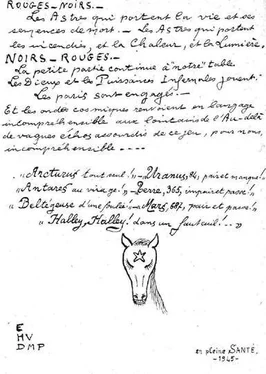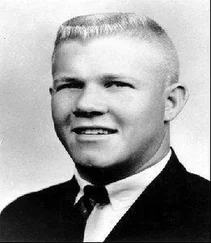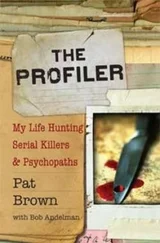Now, despite this service to his country, Petiot was on trial for twenty-seven murders. He admitted nineteen of them, claiming that each one was a Gestapo agent, an informer, or someone attempting to infiltrate the Fly-Tox organization and therefore subject to be “executed in the name of the Resistance and the name of France.” This was not a crime, Floriot reminded the court, citing the wartime proclamation issued by General de Gaulle in Algiers: “There is no crime or misdemeanor when the crime or misdemeanor has been committed in the interest of France.”
As for the other eight charges, Denise Hotin, Jean-Marc Van Bever, Marthe Khaït, Joachim Guschinow, Paul Braunberger, and Kurt, Greta, and René Kneller, Petiot denied them. Other than Guschinow and the Knellers, whom he had helped flee Occupied Paris, Petiot had no idea about the whereabouts of any of the other men and women. If the prosecution could provide sufficient evidence to pin a single one of these eight missing persons on his client, Floriot said, Petiot should be condemned. But the prosecution had not done so.
Floriot was meticulous, zooming in on each alleged victim and raising many doubts about the prosecution’s evidence. In the case of René Kneller, for instance, it was true that a pair of child’s pajamas had been found at 21 rue Le Sueur, the body of a young boy had washed up in the Seine, and, at the time of Petiot’s arrest, a ration card formerly belonging to the seven-year-old René had been found in Petiot’s possession with the surname changed to read Valeri.
Yet the prosecution had not managed to disprove Petiot’s defense that he sent the family abroad. Perhaps the pajamas had simply been left behind as dirty laundry and the ration card handed over as a gift or in lieu of the fees the Knellers owed Petiot. As for the body of the boy in the Seine, that could have been one of many young children who tragically disappeared in those days. There was no evidence proving it was René, and nothing at all connecting the remains to Floriot’s client. Petiot should not face the death penalty, the advocate argued, with so many questions remaining unanswered, and certainly not with such a glaring lack of evidence.
Turning to the disappearance of Dr. Paul Braunberger, Floriot proceeded to undermine the prosecution’s main link to Petiot: the hat and shirt found on his property that Marguerite Braunberger claimed had belonged to her husband. Madame Braunberger, Floriot noted, was nearly blind. She had only identified the objects after reading a description of them in a catalogue and then looking specifically for them.
The evidence, moreover, had been treated sloppily. The suitcases in which the items were found had been packed by the police in the absence of Dr. Petiot. This was understandable given that Petiot was in flight at the time. But after his arrest, the suitcases were opened and closed a number of times without his or his attorney’s presence. The fact that the seal was still intact was irrelevant. What was the guarantee of the integrity of the contents, Floriot asked, when the items had been “opened fifteen times in my absence and closed fifteen times in my absence?”
The hat and the shirt were not even found in the same location. The police claimed that they had been packed together, but that was incorrect. The shirt came from a suitcase in Neuhausen’s attic, while the hat was found in a suitcase at rue Le Sueur that also included a pipe, a camera, an ink blotter, a medical flashlight for examining the throats of patients, and a small appointment book. If the hat and shirt belonged to Braunberger, then where were his jacket, waistcoat, trousers, and any other articles of clothing?
As for the shirt’s supposed “P.B.” initials, Floriot pointed out another problem. He asked the jury to look more closely at the shirt. Was it really P.B.? Could it perhaps be “B.P.”? It also looked like “P.F.” and “F.R.” and some other combinations. Even Professor Sannié of the Identité Judiciaire, who had looked over the shirt closely with his microscope, could not say for certain that the initials had been “P.B.” Floriot explained:
When [Sannié can read the initials], he states it. Look at seal number thirty-five. On two other shirts, you see that someone has tried to remove the embroidered letters. A little further, he writes, “The initials which are found on the belt level of the left side have been removed. It is likely that they were A.E.” As a result, when he is certain, he writes, “The letters are …” and when he is less certain, he writes, “It is likely that …” But as you cannot see any letters on the Braunberger shirt [seal number 44], he says nothing at all. You can see that some letters have been removed; I do not dispute that, but you cannot assert that they are P.B. They might be P.B., but they could also be a number of other combinations
.
As for the hat, Floriot called that “really something incredible.” Madame Braunberger had first told the police in an interview that her husband owned a hat from the designer Gélot. But when the police found a hat that matched her description, it carried the label of a different designer, “Berteil, rue du 4-Septembre.” Braunberger still insisted that the hat belonged to her husband because he had it repaired there in 1942 since, as she said, Gélot had then been closed.
Floriot challenged the statement. First of all, Gélot hats carry their identification in the crown, and so the mark should have remained there, even if the leather sweatband had been changed. Second, as Maison Gélot only designed custom-made hats, Floriot had obtained the form that the hatter used in designing the hat for “Doctor Braunberger, 207 Faubourg Saint-Denis, March 18, 1937.”
With this information, Floriot invited the jury to compare the Gélot form and the hat that the prosecution claimed had belonged to Braunberger. It was, Floriot said, “a disaster.” The hat in question was “too wide and much too short” for Braunberger’s head. To be exact, it was off by two and a half centimeters. “For a man who wore nothing but custom-designed hats,” Floriot noted, “a two-and-a-half-centimeter gap is really quite a lot.” It would either sit on “the top of your head” or fall “to your ears.”
Floriot then reminded the jury that Gélot had said Braunberger’s hat was patterned but the one exhibited in the courtroom was solid. When he called Gélot himself to confirm this fact, he discovered something remarkable. Gélot had actually given a sample of the fabric to the prosecution. “A sample?” Floriot asked. The prosecution had never informed the defense that it had received such a thing.
“Gentlemen of the jury,” Floriot said, taking out the replacement fabric provided by Gélot, “you may compare this sample with this hat.” The exhibit was a solid, flat felt, but the sample was a patterned, rougher, felt chiné . “They resemble each other like night and day.”
Not long after this demonstration, “hats off for the hat trick,” as correspondent Géo London put it, Floriot approached the conclusion: Could Petiot, the doctor who treated a child suffering from leukemia for several days and nights, without being paid a sou, really be capable of killing little René Kneller? Could this Resistance fighter, who had been arrested, tortured by the Gestapo, with his teeth filed down three millimeters and his skull crushed until he bled from the nose, mouth, and ears, really be able to kill Jews fleeing from the Nazis? The patriot and hero Lieutenant Héritier told the court under oath that, regardless of its decision, he would always be proud of being a companion of Dr. Petiot.
“I commend Petiot to your hands,” Floriot said, wrapping up a six-and-a-half-hour summary, the longest in his career. The jury, he was certain, would acquit his client.
Читать дальше












